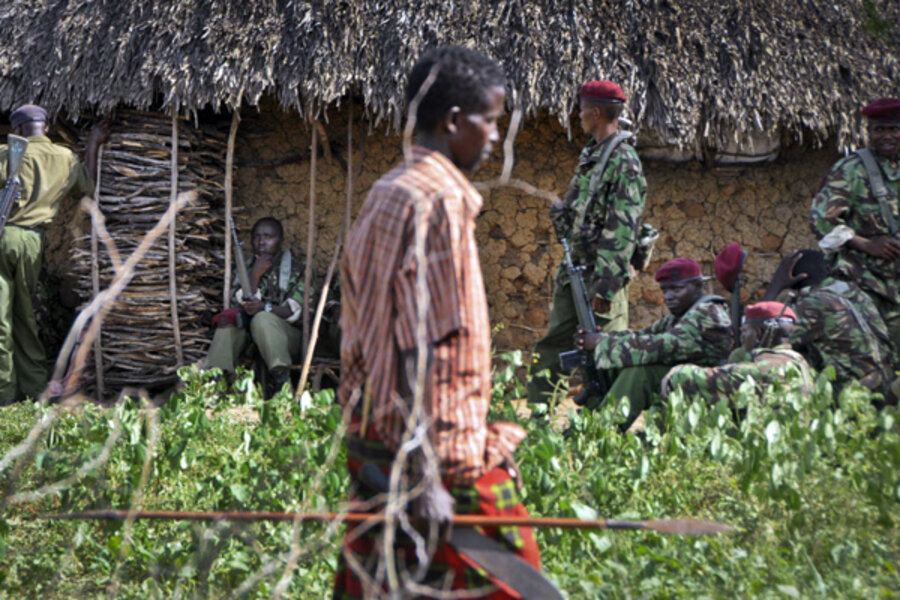39 people killed in clashes in Kenyan village
Loading...
| NAIROBI, Kenya
At least 39 people were killed when farmers raided a village of herders in southeastern Kenya early Friday in renewed fighting between two communities with a history of violent animosity, a police official said.
Thirteen children, six women, 11 men and nine attackers were killed said police official Anthony Kamitu.
Forty-five houses were set on fire during the attack, Kenya Red Cross spokeswoman Nelly Muluka said.
Kamitu who is leading police operations to prevent attacks in the region, said that the Pokomo tribe of farmers raided a village of the semi-nomadic Orma herding community at dawn in the Tana River Delta. He said the raiders were armed with spears and AK-47 rifles.
At least 110 people were killed in clashes between the Pokomo and Orma in August and September.
The tit-for-tat cycle of killings may be related to a redrawing of political boundaries and next year's general elections, the U.N. humanitarian coordinator for Kenya, Aeneas C. Chuma, said late August. However, on the surface the violence seems driven by competition for water, pasture and other resources, he said.
Dhadho Godana, a member of parliament from the region and Defense Minister Yusuf Hajji have been accusing each other of involvement in the fighting. The two have testified before a commission of inquiry led by a High Court judge investigating the clashes
Political tensions and tribal animosities have increased due to competition among potential candidates in the March election.
Violence after Kenya's last general election, in late 2007, killed more than 1,000 people. Officials are working to avoid a repeat during March's presidential election, but episodes of violence around the country are raising fears that pockets of the country will see violence during the voting period.
The Tana River area is about 430 miles (690 kilometers) from the capital, Nairobi.
The utilization of the Tana River water has been at the middle of a conflict pitting the Pokomo against the Orma, according to research by the Institute of Security Studies in 2004, following clashes in the Tana River area in 2000 to 2002.
The Pokomo claim the land along the river and the Orma claim the waters of the river, said the research by Taya Weiss, titled "Guns in the Borderlands Reducing the Demand for Small Arms." At least 108 people died in the 2000-2002 clashes, according to the parliamentary record.
The longstanding conflict between the two tribes had previously resulted in relatively low casualties but the increased availability of guns has caused the casualties to escalate and more property to be destroyed, said the report.
It said a catalyst to the conflict was the collapse of three irrigation schemes at Bura, Hola, and Tana Delta, which influenced residents' lifestyles in terms of employment and sources of income.
"The collapse of these schemes forced the nomadic pastoralists to move during the wet season, while the farmers remained along the river. During the dry season the pastoralists move back to the river in search of water and pasture," it said.
The Tana River area has the characteristics of any other conflict-prone area in Kenya: underdevelopment, poor infrastructure, poor communication and social amenities, and social marginalization, according to the report.
"Communities are arming themselves because of the need to defend against perceived attacks," said the report. "They feel that the government security machinery has not been able to effectively respond to violence. Isolation has led to increased demand for guns."





